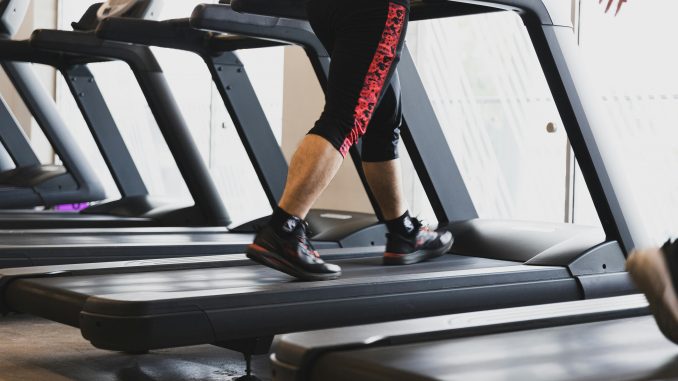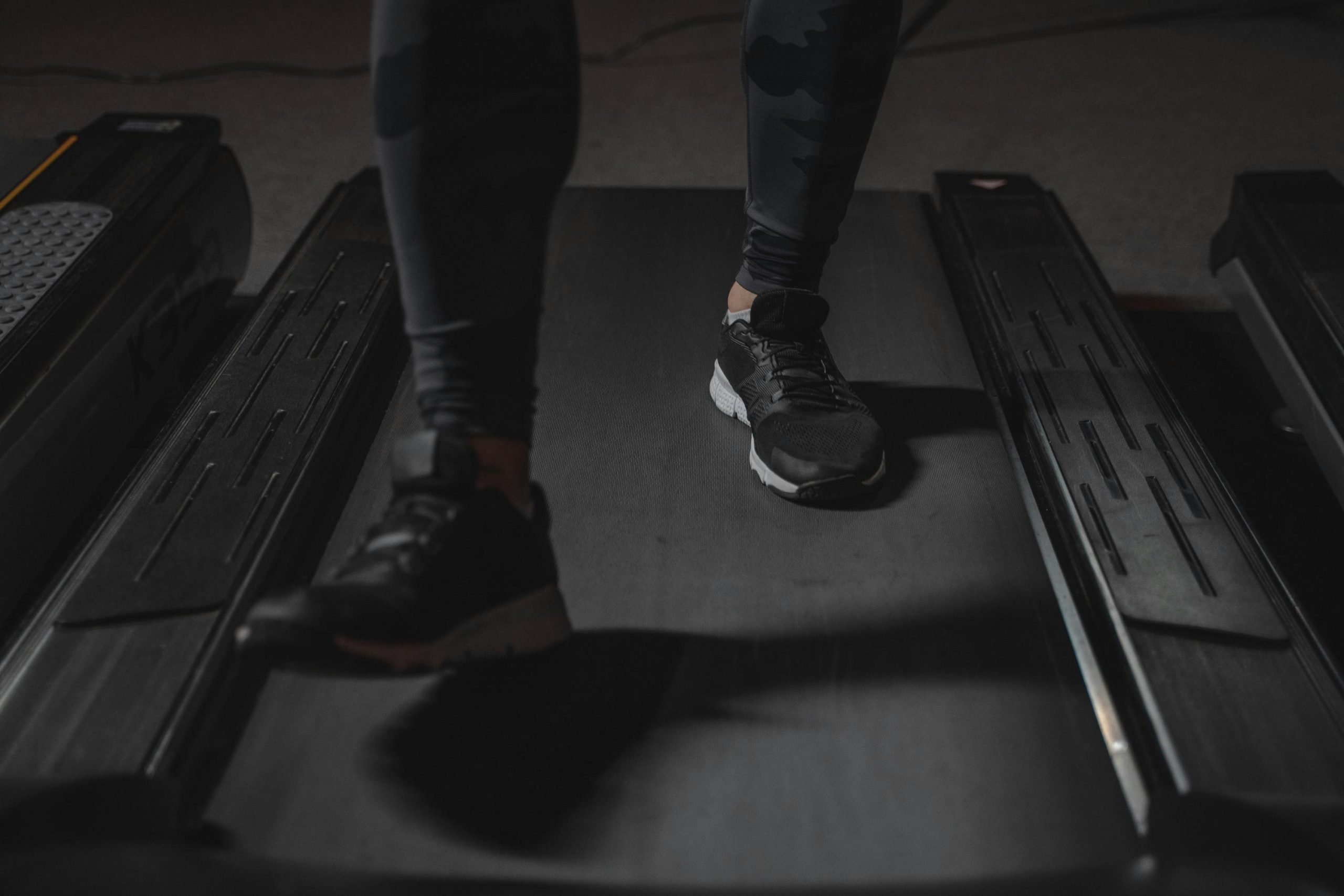

Whether you’re aiming to boost daily activity or train for a race, a walking pad or treadmill can help. But which is the right choice for your lifestyle and goals? Here’s an easy-to-follow, in-depth comparison.
What Is a Walking Pad?

A walking pad is a slim, portable treadmill designed mainly for indoor walking. Unlike traditional treadmills, it’s built with a low profile, making it easy to slide under a desk, bed, or couch when not in use. Most walking pads don’t have handles or large display panels, which helps save space. They’re especially popular for use with standing desks, allowing people to walk slowly while working, reading, or watching TV.
These machines are best for low-impact movement and are a favorite among people who want to stay active throughout the day without going to the gym. While they don’t support running or intense workouts, walking pads are perfect for building healthy habits, improving circulation, and increasing daily step counts—especially in small homes or offices.
Pros:
- Ultra-compact and storage-friendly—easily folds or slides under furniture
- Whisper-quiet operation—won’t disturb coworkers, kids, or roommates
- Great for home offices or small apartments
- Encourages daily movement without breaking your routine
Cons:
- No handrails or incline options—less stability and variety
- Cannot support running—only suitable for walking speeds
- Limited weight and speed capacity—check product specs before buying
A walking pad is perfect if you want simple, space-saving movement during your day.
What Is a Treadmill?
A treadmill is a full-size fitness machine designed for walking, jogging, and running indoors. It typically features a large belt, handrails, a display console, and advanced settings for speed and incline. Treadmills are commonly found in gyms but are also popular for home use by people who want serious cardio workouts without leaving the house.
Most treadmills allow you to adjust your workout intensity with speed controls and incline levels. Some even come with built-in heart rate monitors, preset workout programs, and screens for virtual training. Because they’re made for higher-intensity activity, treadmills are larger and more durable than walking pads.
If you’re focused on weight loss, cardiovascular fitness, or training for a race, a treadmill offers more flexibility and challenge than a walking pad. However, the size, noise, and cost can be drawbacks for smaller spaces or quieter homes.
Pros:
- Supports walking, jogging, and running—more versatile for different fitness levels
- Stable and sturdy design—better for balance and intense workouts
- Advanced features—adjustable incline, speed, built-in programs, and fitness tracking
- Ideal for structured fitness training
Cons:
- Bulky and heavy—takes up more floor space
- Can be noisy—may disturb others in your home
- Costs more than walking pads—larger investment upfront
Treadmills are great for full-body cardio workouts and long-term fitness goals.
Key Differences at a Glance

When comparing a walking pad vs treadmill, there are several key differences to consider. These include size, storage needs, noise level, price, workout intensity, and available features. Here’s a breakdown to help you decide which is right for your lifestyle and space:
- Size: Walking pads are slim and portable, making them ideal for small apartments or home offices. Treadmills, on the other hand, are large and heavy, designed for more permanent workout spaces.
- Storage: A walking pad can easily slide under a bed or sofa when not in use. Treadmills typically require a dedicated area since they aren’t as easy to move or store.
- Noise: Walking pads are very quiet, which makes them perfect for shared spaces or using while working. Treadmills can be loud—especially when running—so they may not be ideal for noise-sensitive environments.
- Cost: Walking pads are more affordable, usually ranging from $300 to $600. Treadmills can be a bigger investment, with prices starting around $500 and going up to $2,000 or more for advanced models.
- Workout Intensity: Walking pads are best for light walking at slower speeds. Treadmills support a full range of exercise from walking to jogging and even running.
- Features: Walking pads offer basic speed controls and minimal extras. Treadmills often include incline settings, workout programs, screens, and heart rate sensors for a more customized experience.
These differences can help you choose the machine that fits your fitness goals, space, and budget.
Who Should Choose a Walking Pad?
A walking pad is great if you:
- Live in a small space like an apartment
- Want to stay active while working from home
- Have minimal space and shared living environments
- Prefer a low-cost fitness solution
Who Should Choose a Treadmill?
A treadmill is ideal if you:
- Want to run or train for races
- Need diverse workouts and settings
- Have room for a larger fitness machine
- Value a more durable, feature-rich setup
Workout Goals & Intensity
When deciding between a walking pad vs treadmill, your fitness goals play a big role. Walking pads are designed for low-impact, light activity. They’re perfect if your goal is to stay lightly active throughout the day, track your steps, or move while working at a standing desk. They’re a great option for people who want to reduce sedentary time without doing intense workouts.
Treadmills, on the other hand, are built for a wider range of activity. You can use them for a gentle walk, a steady jog, or a full-speed sprint. This makes them better suited for those who are focused on improving cardiovascular fitness, burning calories, or training for specific goals like running a 5K.
- Walking Pads: Great for light, consistent movement. Best for daily step goals and light exercise.
- Treadmills: Better for higher intensity workouts and structured fitness training, including incline walking and interval running.
While both offer physical benefits, treadmills have the edge when it comes to calorie burning and boosting heart health due to their higher speed and intensity options.
Long-Term Costs: Maintenance & Electricity
When comparing a walking pad vs treadmill, it’s important to consider the long-term costs—not just the purchase price. Walking pads tend to be more budget-friendly over time. They use less electricity, which helps keep energy bills low, and they require very little maintenance. You’ll mainly need to keep the belt clean and lubricated once in a while to ensure smooth operation.
Treadmills, while more powerful, can cost more to operate and maintain. Their motors use more electricity, especially during running or incline workouts. Over time, you may need to replace parts like the belt or rollers, and some models require professional servicing for more complex issues.
- Walking Pads: Low energy use; minimal maintenance like belt cleaning and lubrication.
- Treadmills: Higher electricity use; maintenance includes belt lubrication, occasional part replacements, and possible service calls.
If you want something with low upkeep and minimal added cost, a walking pad may be the better long-term choice. But if you’re committed to a full fitness routine, the extra upkeep and power cost of a treadmill might be worth it.
Durability & Lifespan
When choosing between a walking pad and a treadmill, durability plays a big role—especially if you plan to use the equipment often. Walking pads are built for light to moderate use, such as slow-paced walking during work hours or short sessions at home. With regular use and proper care, most walking pads last about 3 to 5 years.
Treadmills, on the other hand, are designed for more intense workouts, including jogging and running. Because of their stronger motors, reinforced frames, and better overall construction, treadmills—especially mid- to high-end models—can last 7 to 10 years or longer if maintained properly. However, since they include more moving parts, such as motors, rollers, and incline systems, regular maintenance is more important to keep them running smoothly.
- Walking Pads: Typically last 3–5 years with light to moderate use; less complex design means fewer parts that can break.
- Treadmills: Often last 7–10+ years; built for heavier use but require consistent maintenance to extend their lifespan.
If you want equipment that lasts longer and can handle more intense workouts, a treadmill offers better long-term value. But if your needs are light and you’re short on space, a walking pad may still serve you well for several years.
Health & Safety Considerations
Safety is important no matter which machine you choose. Both walking pads and treadmills are generally safe when used properly, but each has unique considerations.
Walking pads are low to the ground and operate at slower speeds, making them safer for casual walking. However, they often lack handrails, so it’s important to stay balanced, keep your eyes forward, and avoid distractions while using one. Always place the walking pad on a flat, stable surface to prevent it from shifting during use.
Treadmills, which operate at higher speeds and offer features like incline, pose more risk if not used with care. Make sure to use the safety clip—this will stop the machine if you fall or step off suddenly. Start slow and increase speed gradually, especially if you’re new to treadmill workouts. Also, keep the surrounding area clear of children, pets, and loose items to prevent accidents.
-
- Walking Pads:
- Maintain balance and look ahead
- Avoid multitasking while walking
- Use on flat, non-slippery surfaces
- Walking Pads:
- Treadmills:
-
- Always wear the safety clip
- Start at a low speed and build up
- Keep pets, kids, and clutter away from the machine
By following these basic safety steps, both options can be used confidently and safely.
Smart Features & Technology
Walking Pads:
- Tracking steps, Bluetooth apps, remote control.
Treadmills:
- Touchscreens, preset workouts, groove belts, heart-rate sensors, and connectivity with fitness platforms like Peloton.
Buying Tips
Before choosing between a walking pad and a treadmill, it’s important to consider a few key points to make sure you get the right machine for your needs and space.
Start by measuring your available space. Walking pads are compact and easy to slide under furniture, while treadmills require more room and additional clearance around them for safe use. Knowing your space will help you decide what fits without crowding your home.
Next, set a budget. Walking pads are generally more affordable, making them a good option if you’re looking for basic walking functionality. However, treadmills—especially those with features like incline, preset workouts, and smart screens—may provide better long-term value for those with bigger fitness goals.
Also, consider the features you need. Do you just want a basic machine for walking during work hours, or are you looking for an intense cardio machine that tracks progress and pushes your limits? Make a list of must-haves versus nice-to-haves.
Lastly, don’t forget to check the warranty. A good warranty will cover essential parts like the motor and belt for at least a year or more. This can save you money and hassle if repairs are needed.
- Measure Space: Ensure the equipment fits and leaves room for safe use
- Set a Budget: Walking pads are cheaper; treadmills offer more features
- Think Features: Decide on essentials like incline, programs, and display
- Check Warranty: Look for 1–5 years of coverage on key parts
Taking time to plan your purchase ensures you’ll choose the right machine for your lifestyle and goals.
Final Verdict: Walking Pad vs Treadmill
Choose a walking pad if you want a compact, quiet, affordable way to stay active by walking while doing other things. Choose a treadmill if you’re aiming for serious fitness, including running, incline workouts, and structured sessions.
Both machines help you move more at home—pick the one that best fits your space, budget, and fitness goals.